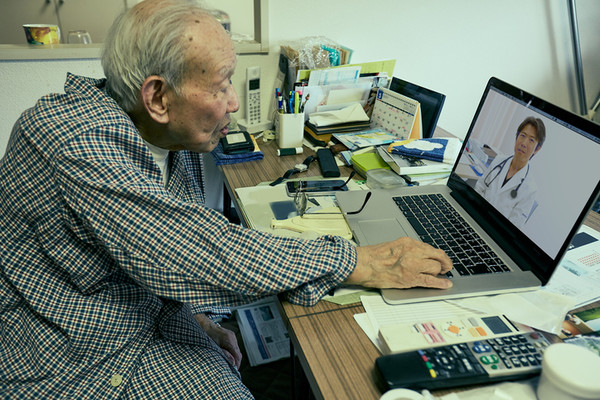Medical professionals and other healthcare experts agree on the need for Korea to introduce telemedicine but disagree on “how.”
A recent survey by the National Evidence-based healthcare Collaborating Agency (NECA) confirmed it, with respondents agreeing on some issues but showing differences in others.
More specifically, they agreed on the need to introduce telemedicine in areas such as reexamining chronic diseases, infectious diseases requiring monitoring, and nursing hospitals. On the other hand, they largely disagreed on providing telemedicine according to doctors’ judgment. Some differences of views were also found in departments where telemedicine can be allowed.

In a forum organized by NECA on Monday, Kim Hee-seon, an associate researcher, explained these and other points while presenting her study, “Telemedicine service models need to be introduced in Korea and their applications.”
Kim conducted the opinion poll on three occasions from Sept. 8 to Nov. 18 on 20 experts recommended by the Korean Medical Association, the Korean Hospital Association, the Korean Council for Independent Clinicians, the Korean Society of Medical Informatics, and the Korean Society for Telemedicine.
As telemedicine service items that need to be introduced in Korea, all experts agreed on the reexamination and prescription for chronic diseases, infectious diseases requiring monitoring, nursing hospitals, guidance and management of senile degenerative diseases, guidance and at-home care for physically challenged people, and community-based homecare for chronic diseases.
Besides, telemedicine service items agreed to be introduced here by many, but not all, respondents were:
-- Nursing care for a specific disease or nursing guidance for infants
-- Areas to complement face-to-face care
-- Cases with high severity needing more frequent counseling than coming to the hospital
-- Acute postoperative management required by secondary hospital-level medical institutions
-- Preoperative risk assessment in scheduled patients
-- Kidney dialysis map management
-- Remote areas
On the other hand, there were too wide differences of views among experts to induce agreements in areas such as providing non-face-to-face treatment based on doctors' judgment and limiting telemedicine to mild diseases that can be treated at neighborhood clinics.
In specific treatment departments, neurologists cited stabilized patients after the cerebral infarction outbreak; urologists cited people with urolithiasis; and ophthalmology departments cited eye disease-related consultation.
Among service items and departments a majority of experts agreed on are postoperative wound care in surgery and orthopedic departments, chronic disease patients in the international medicine department, pregnancy and perinatal care in the ob-gyn department, childcare counseling in children and adolescent department, consultation on smoking cessation and obesity in family medicine department, patients with mobility difficulty in the rehabilitation department, and confirmed degenerative diseases.
In contrast, all medically ill patients related to mental health medicine were selected as areas on which agreements were hard to obtain due to differences of views.
Diseases that should be excluded from telemedicine are situations in which face-to-face treatment and intervention by medical workers, including doctors, are needed and cases that need face-to-face treatment due to a new disease or trauma.
“It is necessary to consider introducing telemedicine to agreed areas first and proceed to others within the current legal and institutional boundaries and move forward gradually,” Kim said.
NECA also released its analysis of telemedicine service uses from Feb. 24, 2020, to Dec. 31, 2021, based on the data of the National Health Insurance Service.
During the period, 19,829 medical institutions provided telemedicine service, and 1,643,259 patients made 3,449,203 insurance claims.
Since the nation introduced telemedicine service, patients' uses have continuously increased. High blood-pressure patients made the largest number of claims, accounting for about 20 percent of the total telemedicine treatment.
Related articles
- Nearly nine in 10 Koreans want to use telemedicine in the future -- survey
- In some Asian countries, telemedicine is ‘not optional but compulsory’
- Drones in healthcare, a not-so-distant future in Korea?
- Pros and cons of telemedicine clash in ethics panel debate
- Nearly 14 million Koreans used telemedicine in Covid-19 period
- Is the institutionalization of telemedicine gaining momentum?

